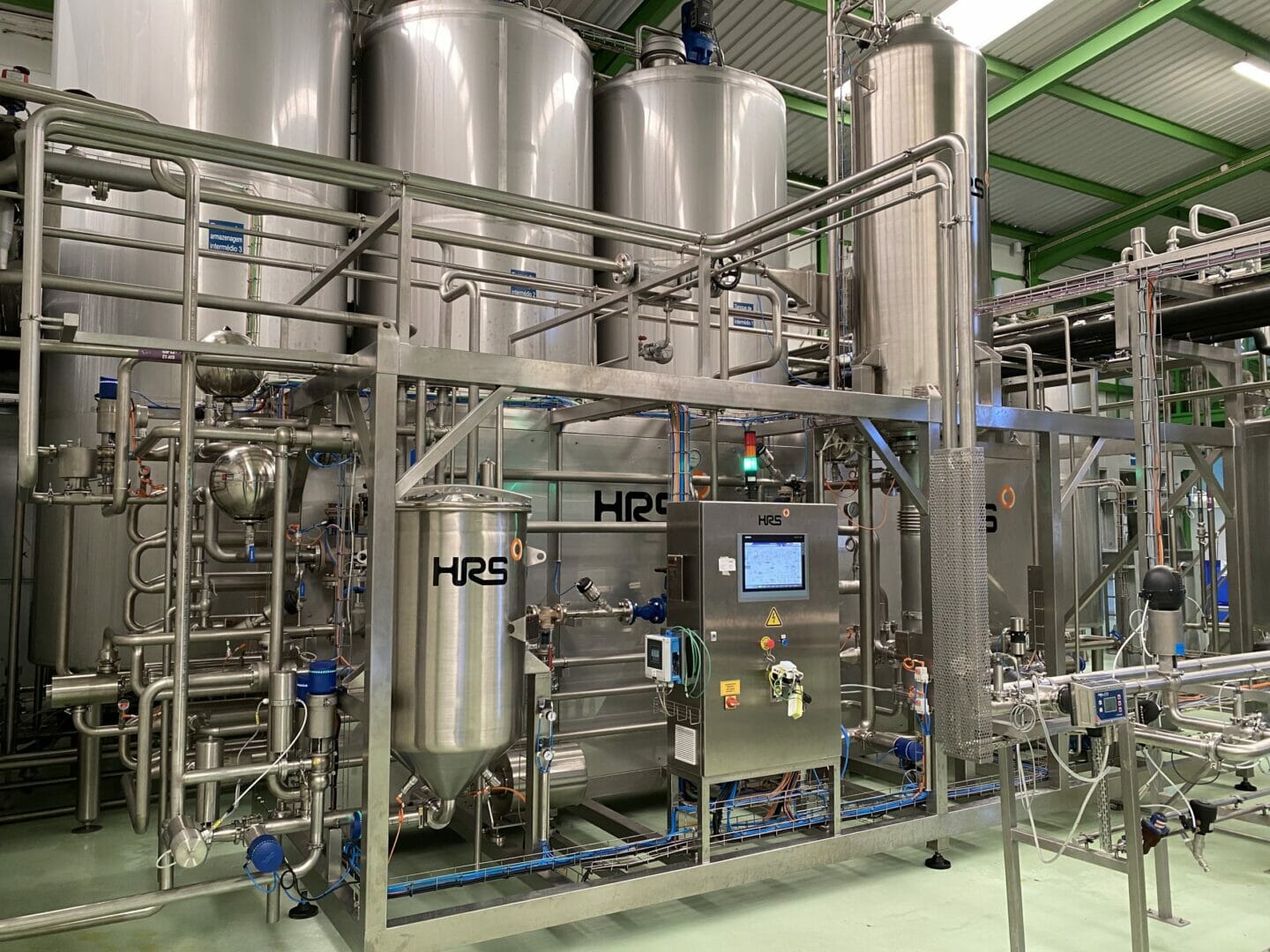By Matt Hale, International Sales & Marketing Director, HRS Heat Exchangers
According to The Vegan Society, the plant-based milk market in the UK was worth more than £230 million in 2019 – around 15% of the European market1, and the value of the market is predicted to more than double by 2025.
In fact, the plant-based milk market now accounts for around 10% of the total milk market, and the growing number of consumers of plant-based milks have more choice than ever before. The most popular plant-based milk in the UK is currently oat milk (which occupies almost a third of the market), followed by almond milk, coconut milk and soya milk. However, the sector is full of innovation, with new developments and products plant-based milk alternatives, or ‘alt-milks’ as they are sometimes known, are being made from more raw ingredients than ever before, with pea- and barley-based drinks being among the most recent newcomers to the market.
There are many reasons for the popularity of plant-based milks. As well as a rise in the adoption of vegan and plant-based diets due to health and moral grounds, environmental concerns are also driving uptake with proponents claiming that plant milk has a lower greenhouse gas (GHG) footprint than dairy production – although the overall picture is highly complex, and the figures are disputed by the dairy industry. An apparent increase in the level of lactose intolerance in developed countries is also helping to increase demand.
The range of plant-based milks also allows for consumers to express their tastes and identities as cafes and restaurants open-up after lockdown. As one industry analyst said earlier this year, “To choose your specific type of plant-based milk in Starbucks seems to be a way of identifying yourself.”
While dairy milk has long been seen as a drink or a meal accompaniment, for example being used as an ingredient or with cereal, there are increasing signs that plant-based drinks, particularly those with a thicker more yoghurt-like texture or those sold in individual portions, are being seen as a healthy snack in their own right. Research by the Brisan Group2 suggests that up to a third of these products are viewed as a snack, and 61 per cent are viewed as ‘a treat.’
Globally soya milk products remain the most popular (although the demand for oat-based products is growing) and they accounted for 29.5% of revenue globally in 2019. Coconut-based beverages are one of the fastest growing segments, predicted to increase 8.6% between 2020 and 2027. Across all types of plant-milk, plain flavours dominate sales, accounting to 71.1% of the total value.
Production of plant-based milk
Contrary to public perception, the idea of plant-based milks is not new. ‘Milk’ made from soyabeans has a long history in China (where recorded production dates back to 1365), while almond milk was recorded in the Middle East in the 13th century. A commercial soya milk factory was established near Paris in 1910 and demand for soya milk rose through the 1970s and 80s due to increasing awareness of lactose intolerance.
These days there is a wide range of plant-based milks made from nuts, grains and legumes, as well as other seeds (such as sunflower and hemp) or coconut.
There are two main methods for processing plant-based milk: wet or dry. The wet process involves soaking and grinding the raw material in large volumes of water for up to 12 hours. In some cases, enzymes are added to hydrolyse starches (for example in oat milk production). The dry process involves milling the raw material into a flour or powder which is then processed to separate the starch, protein and fibre as desired, before being hydrated. As a result, dry production processes can result in a higher protein content in the finished product.
The production method means that, if the soaked product is not ground to sufficiently fine a size, the number of particles removed when the mixture is strained creates high levels of waste. It is also important to mix products well, particularly those containing oils or thickening or stabilising agents. Therefore, maintaining product consistency is a key goal for the manufacturing process, and will determine the choice of processing equipment including pumps, heat exchangers, etc.
Disadvantages of plant-milk
Plant-based milks cannot match the natural nutrition profile of dairy milk in terms of protein levels and essential amino acids. However, as well as being free of lactose, they are lower in saturated fat and cholesterol than non-skimmed milk.
Plant-based milks are not immune from criticism, and in some countries and regions, including the European Union, such products cannot be sold or marketed as ‘milk’ or ‘yoghurt.’ In addition, supporters of dairy milk say plant-based drinks are highly processed and full of additives, while diary milk is simply homogenised and pasteurised.
Despite this, such is the interest in the sector than many of the world’s largest dairy companies, including Lactalis, Nestlé and Danone, are investing into dairy-alternatives, either through product development or company acquisition. A number of market analysts believe the market is ready for rationalisation, with a number of brands falling by the wayside or being acquired by larger food producers.
Maintaining quality and demand
The quality of the product is very important, and monitoring of key parameters includes viscosity, particle size, protein content, digestibility, nutrient content and flavour analysis. Maintaining these important quality characteristics requires the minimal amount of processing – and making sure that processes such as pasteurisation cause as little disruption to the product as possible can help alleviate criticisms about the highly processed nature of plant milks.
Where possible, combining processes such as dilution and sterilisation, for example by using the using the HRS DSI Series, can provide benefits and reduce overall processing of the product. The benefit of sterilising using direct steam injection is the speed of the process, with sterilisation temperatures of 100 to 145 deg. C. being reached in around a second; much quicker than the fastest heat exchanger systems. For products such as plant milks, this rapid heating prevents cooking of the product and formation of caramel-type compounds which can darken the product or produce unwanted flavours.
It is also useful for grain-based products, such as oat milk, which benefit from the additional dilution with water which the food-grade steam provides, but the type and model of heat exchanger chosen will depend on many different factors, such as the nature of the process to be carried out (pasteurisation, sterilisation, dehydration, etc.) and the viscosity of the drink being processed. HRS has a complete range of products from simple tube-in-tube designs to rotating or reciprocating scraped-surface designs, all of which combine efficient heat transfer with delicate product handling; ensuring that products remain in emulsion and that the product does not foul the equipment.
Whatever plant-based milk product you are producing, it is important to remember that plant-based milks have the same requirements for pasteurisation, sterilisation, cooking or cooling as other beverages which contain specific ingredients. It is therefore crucial to invest in the most effective and efficient processing technology for all stages of production.








